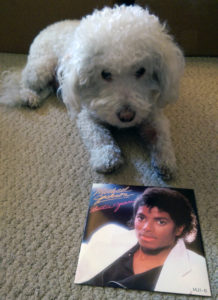The late Robbie Robertson of The Band was born on this date in 1943. Hear some of his best on today’s playlist.
Follow Tunes Du Jour on Facebook
Follow Tunes Du Jour on Twitter
Follow me on Instagram
Today’s playlist celebrates the December 9 birthdays of Portishead’s Geoff Barrow, Green Day’s Tre Cool, Joan Armatrading, Jessie Hill, Cybotron’s Juan Atkins, The Osmonds’ Donny Osmond, Uffie, Imogen Heap, Donald Byrd, Dan Hicks, Sylvia, and Neil Innes; and the December 10 birthdays of Commodores’ Walter Orange, The White Stripes’ Meg White, Dinosaur Jr.’s J Mascis, Placebo’s Brian Molko, Paul Hardcastle, Kyu Sakamoto, Peter Sarstedt, Wang Chung’s Jack Hues, Chad & Jeremy’s Chad Stuart, and Teyana Taylor.
Follow Tunes du Jour on Facebook
Follow Tunes du Jour on Twitter
Follow me on Instagram

Inspired by the season and the December 10 birthdays of Commodores’ Walter Orange, Dinosaur Jr.’s J Mascis, The White Stripes’ Meg White, Teyana Taylor, Wang Chung’s Jack Hues, Paul Hardcastle, Peter Sarstedt and Chad & Jeremy’s Chad Stuart.

Inspired by the season and the December 9 birthdays of Donny Osmond, Portishead’s Geoff Barrow, The Rutles’ Neil Innes, Joan Armatrading, Dan Hicks, Donald Byrd, Uffie, Sylvia, Jessie Hill and Cybotron’s Juan Atkins.
June is LGBTQ+ Pride Month. Tune du Jour celebrates with this playlist consisting of two hundred songs by and/or about Ls, Gs, Bs, Ts and Qs. Happy Pride!
Click here to like Tunes du Jour on Facebook
Follow me on Twitter: @tunesdujour
Follow me on Instagram: @glennschwartz

MTV debuted on August 1, 1981. Back then it was a music video network. It positioned itself as a rock station. Most of the videos shown were of songs made by Caucasian performers, though rock-leaning black acts such as Joan Armatrading and the Bus Boys got some play.
Then came “Billie Jean.” The second single from Michael Jackson’s Thriller, “Billie Jean” was accompanied by a stylish video featuring a mesmerizing performance from Jackson. However, it wasn’t a rock song. It didn’t fit the format of rock radio stations, and it didn’t fit the format of MTV either.
But there is a big difference between radio and music television. There were plenty of radio stations and many different formats. You may not hear “Billie Jean” on the rock stations, but you could hear it on r&b stations and pop stations and dance-leaning stations. However, there was only one music television – MTV.
In his autobiography, Howling at the Moon, Walter Yetnikoff, head of CBS Records, for whom Jackson recorded (and where I worked in my first music business job), wrote “I screamed bloody murder when MTV refused to air [Jackson’s] videos. They argued that their format, white rock, excluded Michael’s music. I argued they were racist assholes – and I’d trumpet it to the world if they didn’t relent. I’ve never been more forceful or obnoxious. I’ve also never been as effective, threatening to pull all our videos. With added pressure from [Thriller producer] Quincy Jones, they caved in, and in doing so the MTV color line came crashing down.”
Jackson’s video for “Billie Jean” aired on MTV, followed just weeks later by his video for “Beat It,” a song whose guitar solo from Eddie Van Halen helped make it a hit on rock radio. These two videos made Jackson, already a superstar, a worldwide phenomenon with a humongous fan base that transcended race, age and location in a way never seen before. These two videos made MTV, a year and a half old and fairly popular in white suburban areas, a cultural institution. These two videos made the music video, then not something done for many singles, particularly those performed by artists of color, an art form and a necessary marketing tool.
Some people tuned in to MTV to see the Michael Jackson videos, and while watching the channel, discovered other acts. Some people tuned in to MTV to watch “white rock” videos, and while watching the channel, discovered Michael Jackson.
MTV went to showcase more “non-rock” videos. In 1988, they launched their hugely popular program Yo! MTV Raps, something that would have been completely unexpected just five years earlier, pre-“Billie Jean.”
While MTV deserves credit for making “Billie Jean” and Thriller successful, the person most responsible is Jackson himself. He wrote the song. He sang the song. He danced the song. Quincy Jones did not want “Billie Jean” to appear on Thriller. He didn’t like the title. He didn’t like the bassline. He felt the song’s introduction was too long. Jackson argued “But that’s the jelly!…That’s what makes me want to dance.” Jones wasn’t ready for this jelly, but Jackson stood his ground.
In May of 1983, NBC aired a tribute to Motown Records. Motown: Yesterday, Today, Forever featuring many legends who recorded for the storied label performing their classics. We saw Diana Ross, the Temptations, Marvin Gaye, Smokey Robinson and the Miracles, Stevie Wonder, the Four Tops, Martha Reeves, Lionel Richie and the Commodores, Mary Wells, Junior Walker and then some. It was a terrific show, but the talk of the town following its airing was the performance of a song not from the Motown catalogue – Michael Jackson’s “Billie Jean.” The iconic performance, during which Jackson brought the famous moonwalk to the world at large, pushed him that much more ahead of any other performer working in music back then.
Following “Beat It,” CBS Records released four more singles from Thriller. All seven of the singles released (the album had only nine songs!) went top ten, breaking the record of most top ten hits from a single-artist album that was set a few years earlier by…Michael Jackson, whose Off the Wall gave us four. Before Thriller, four singles for one album was considered a lot. Thriller raised the bar for blockbuster albums, and subsequent releases such as Bruce Springsteen’s Born in the U.S.A., Prince’s Purple Rain, Def Leppard’s Hysteria and Janet Jackson’s Control each produced more than four hits.
“Billie Jean” changed everything.
On this week’s Throwback Thursday playlist, Tunes du Jour spotlights 1983, kicking off with Michael Jackson’s classic “Billie Jean.”
Click here to like Tunes du Jour on Facebook!
Follow me on Twitter: @TunesDuJour

The first Joan Armatrading record I heard was 1983’s “Drop the Pilot.” It was her only single to make the US Hot 100. The follow-up single, “(I Love It When You) Call Me Names,” got some radio play in Boston, where I was attending school at the time. I picked up her album The Key, from which these two tracks were taken, at a local used record shop.
Many years later I learned about Armatrading’s song “Rosie,” about a cross-dressing guy who loves to flirtingly tease the other boys. I bought it from iTunes. It’s a fun number with a reggae rhythm.
Enjoying these three songs, I should have dived deeper into the Armatrading catalogue, but I didn’t do that until yesterday. I saw that today is her birthday, so I took that as my cue to discover other tracks from her.
Today’s playlist was compiled from tracks suggested by music writers and her fans. If anyone reading this is a Joan Armatrading fan, let us know if there are other tracks of hers you think are essential listening.
Besides the music discovery, the other thing I learned about Armatrading from my web research yesterday is that she married her girlfriend in 2011. A belated congrats to them!
Click here to like Tunes du Jour on Facebook!
June is LGBT Pride Month. June is Black Music Month. June is Audiobook Month. June is busting out all over.
For eleven months out of the year I stay in the closet and listen to Mantovani while reading actual books, but in June I am Marvin with a capital Gay.
Tunes du Jour will celebrate LGBT Pride and Black Music all month long (you’re on your own for Audiobooks). Here is a sampler to kick off the celebrations.
<iframe src=”https://embed.spotify.com/?uri=spotify:user:tunesdujour:playlist:7k4gfohaIt1IeiCz0SswPC” width=”300″ height=”380″ frameborder=”0″ allowtransparency=”true”></iframe>